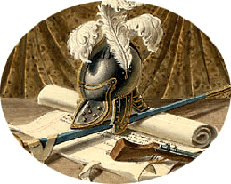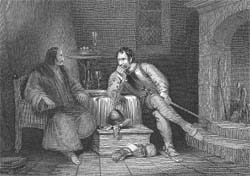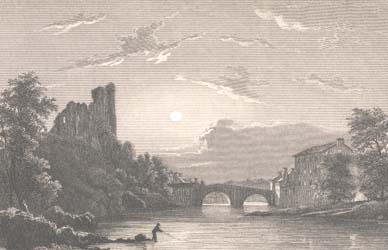|
|
Home | Corson Collection | Biography | Works | Image Collection | Recent Publications | Portraits | Correspondence | Forthcoming Events | Links | E-Texts | Contact RokebyFirst Edition, First Impression: Rokeby; A Poem. By Walter Scott, Esq. Edinburgh: Printed for John Ballantyne and Co. Edinburgh; and Longman, Hurst, Rees, Orme, and Brown, London; By James Ballantyne and Co. Edinburgh, 1813. Composition | Synopsis | Reception | Links Composition
Progress on the poem was initially slow. Scott was unhappy with the first draft of the opening canto and destroyed it in March 1812. Work was then held up by his family's flitting to Abbotsford in May and by the emerging financial difficulties of John Ballantyne and Co., in which Scott was a silent half-partner (see Financial hardship). Scott threw the entire manuscript into the fire in September 1812 and started over again. The third draft proceeded much more rapidly and Scott was hopeful of publishing by Christmas. He began, however, to work simultaneously on a lighter poetic romance, The Bridal of Triermain. This was to be published anonymously at the same as Rokeby, in the hope that the public would think it the work of an imitator and rival of Scott. This is the first instance of a taste for mystification, which Scott would later indulge in as a novelist, appearing variously in the guise of 'The Author of Waverley' and Jedediah Cleishbotham. As Scott was also seeking to complete his editorial work on The Works of Jonathan Swift, he was only able to complete Rokeby on December 31, 1812, with the poem appearing on January 11, 1813. Synopsis
ReceptionFor any other poet, Rokeby would have been an astounding commercial success, with 10,000 copies sold in the first three months. At the same stage, however, sales of The Lady of the Lake had reached 14,000, and Rokeby fell far short of being the triumph that Scott had counted on to cover his mounting expenses at Abbotsford and to mend the affairs of John Ballantyne and Co. Critical opinion was broadly favourable, with particularly positive reviews appearing in the Antijacobin Review, British Critic, and Monthly Review. The British Critic's reviewer called it 'pure poetry' and predicted that 'the name of Scott will descend to the latest posterity with those of the most established poets'. There was particular praise for the vigour and variety of Scott's characterizations, though reservations were expressed regarding the coherence of the plot. A harsher view was offered by the Literary Panorama which thought Scott's vocabulary and rhymes poor and, foreshadowing much criticism of Scott's novels, noted many anachronisms in period detail. Scott was to return to narrative verse with The Lord of the Isles and The Field of Waterloo (both 1815) and Harold the Dauntless (1817) but was never to repeat the success of The Lady of the Lake.
LinksLast updated: 19-Dec-2011 |
|

 In
December 1811, having agreed to the young architect William Stark's
ambitious but exorbitantly priced plan for his new 'cottage' at
In
December 1811, having agreed to the young architect William Stark's
ambitious but exorbitantly priced plan for his new 'cottage' at  The
poem is set just after the Parliamentarian victory at Marston Moor
(1644). Prior to the outbreak of war, the Royalist Lord Rokeby
has favoured the marriage of his daughter Matilda (in whom some
have seen a portrait of
The
poem is set just after the Parliamentarian victory at Marston Moor
(1644). Prior to the outbreak of war, the Royalist Lord Rokeby
has favoured the marriage of his daughter Matilda (in whom some
have seen a portrait of 